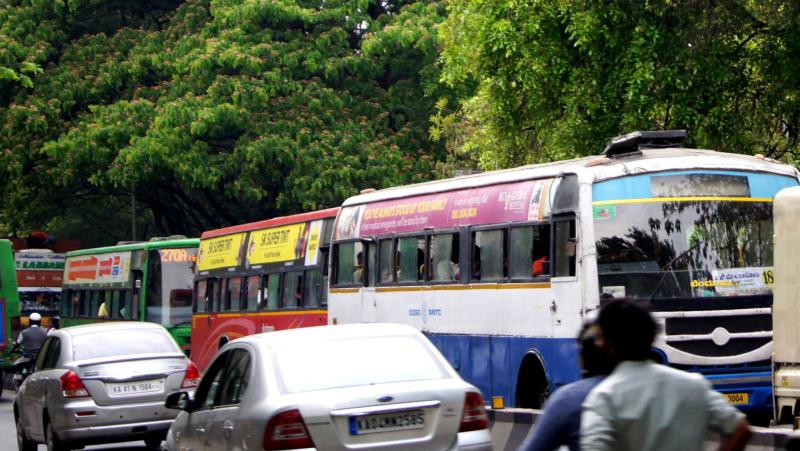
Intelligent Transportation Systems (ITS) are advanced applications that integrate sensing, analysis, control and communication technologies to ground transport systems. They keep users better informed and help them make smarter decisions about public transport. While a standard application of ITS is a bus arrival time indicator, they are also used in ensuring the buses ply within the prescribed speed limits and adhere to bus lanes.
For it to work, an intelligent transportation system needs information about the location of the vehicle at every instant. Although a Global Positioning System (GPS) fitted in the vehicle can be used, most public transport vehicles in India may not have one. As an alternative, in a recent study, researchers from the Indian Institute of Technology Bombay (IIT Bombay) have proposed to use the GPS data collected from passengers’ smartphones to calculate the location of public transport vehicles. The findings are published in the journal IET Intelligent Transport Systems.
The researchers experimented by collecting GPS data from three smartphones, carried by two volunteers, on each public bus on 14 commuter routes in the Greater Mumbai. The test route of 262 km consisted of flyovers, junctions, intersections, dense canopy roads and tall buildings. The data, collected from the smartphones every second, included the time, latitude, longitude, speed and direction of the movement of the vehicle.
The collected data is conventionally processed by an algorithm called Particle Filter (PF). Here is how it works—consider a vehicle that is approaching a crossroad. It is equally likely for it to follow any of the four routes. One could narrow the choices by looking at the next reading of the vehicle’s location after a few seconds. A higher likelihood is then applied to the direction of those choices that the vehicle makes. By iterating this process after every few seconds, we could rule out some possible paths, while some would seem more likely. Thus, the vehicle’s location may be calculated.
In this study, the researchers have improved the Particle Filter algorithm by aggregating simultaneous readings from multiple smartphones. The resulting higher accuracy makes it easier to narrow down the exact location of the public vehicle. The improved method showed a positioning accuracy with an average error of 8.67 meters from the reference ground-based coordinates, which is a significant improvement from the 10.98 m error of a standard smartphone.
This innovation is especially relevant to India since there are expected to be more than 300 million smartphones in the country by the end of 2018, the vast majority being in urban areas. This growth will lead to “richer” data collection, and hence further improvements in the accuracy of positioning may be possible. The authors acknowledge that issues relating to data privacy for the current research are still outstanding. The improved algorithm also needs additional computations and efforts to make it scalable and commercially viable. Further improvements to the proposed method include design to handle changes in topography, torrential rain and variations in vehicle speed.
Intelligent Transport systems are rapidly changing the way public transport operates. Environmental considerations and the dramatic increase in the number of vehicles in India make it vital for the deployment of technology for the efficient use of public transport systems. This research is a step in the right direction.






